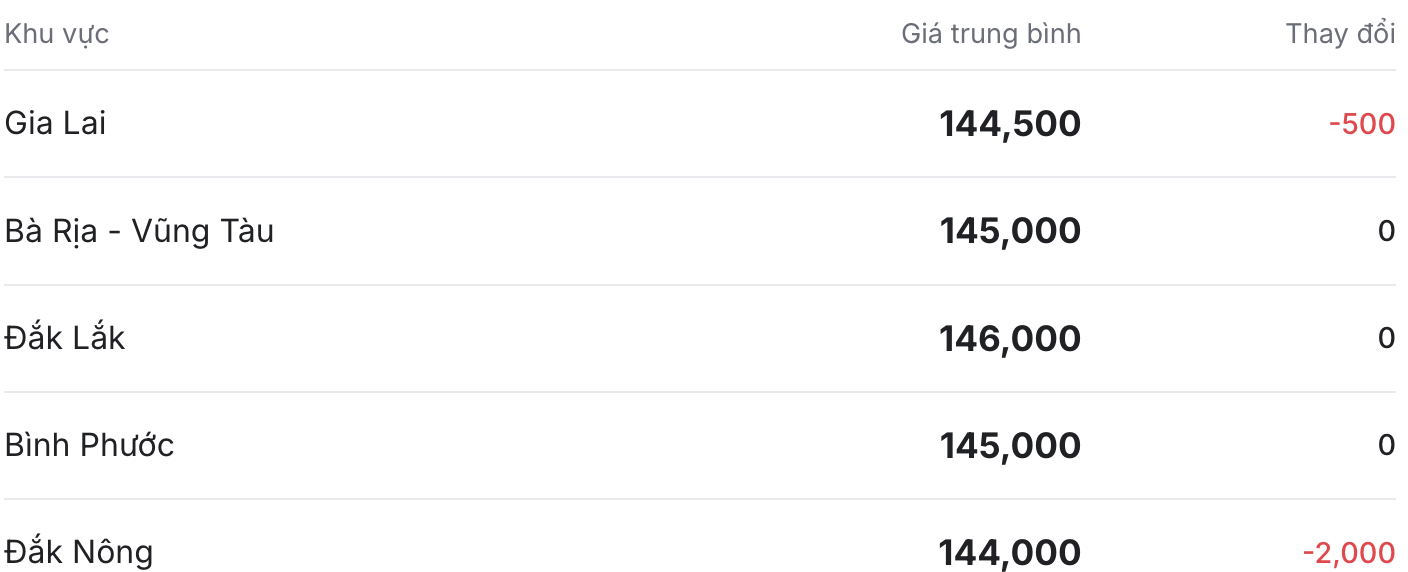Domestic pepper prices: Decreased in some areas
As of 12:30 today (31.), the domestic pepper market has decreased in some areas, an average decrease of 500 VND/kg. Currently, pepper purchasing prices range from 144,500 - 146,000 VND/kg.
Pepper prices in Ba Ria - Vung Tau, Binh Phuoc remain unchanged at 145,000 VND/kg.
Compared to yesterday's closing price, Gia Lai continued to slide by VND 500/kg, currently listed at VND 144,500/kg.
Meanwhile, Dak Lak maintains the highest price in the country at 146,000 VND/kg.
Notably, Dak Nong witnessed a sharp price drop of up to VND 2,000/kg, bringing the price to VND 144,000/kg.

World pepper prices: Red dominates
In the world market, pepper prices fluctuated strongly in most regions. After a series of price increases, the Indonesian market - one of the most vibrant exchanges - kept its discount unchanged. Currently, these two items have decreased by 0.27% and 0.3%, listed at 7,427 USD/ton (equivalent to 194,588 VND/kg); white pepper is listed at 10,125 USD/ton (about 265,275 VND/kg).
In Vietnam, the export price of black pepper of 500 g/l and 550 g/l decreased more than 3%, currently at 6,500 - 6,600 USD/ton (equivalent to 170,300 - 172,920 VND/kg). ASTA white pepper prices also decreased, at 9,500 USD/ton (about 248,900 VND/kg).
The Malaysia and Brazil exchanges alone are stable. Malaysia's white rice continues to hold the highest price globally at 11,850 USD/ton (equivalent to 310,470 VND/kg).

Assessment and forecast
In the context of unclear US tax rates, many importers are cautious and listener when signing new orders. Last week, shipments to the EU and the US increased rapidly with an increase of about 20-30%.
In the short term, pepper purchasing prices fluctuate depending on export speed and the hoarding trend of processing enterprises as well as international traders.
Previously, the Vietnam Pepper and Spices Association (VPSA) forecasted that exports in the second quarter of 2025 and in the coming time will continue to face difficulties due to high prices, causing financial pressure on exporters and importers. To be able to maintain exports, businesses need to boost exports to the EU, India, the Middle East as well as increase strong investment in deep processing and brand building.











